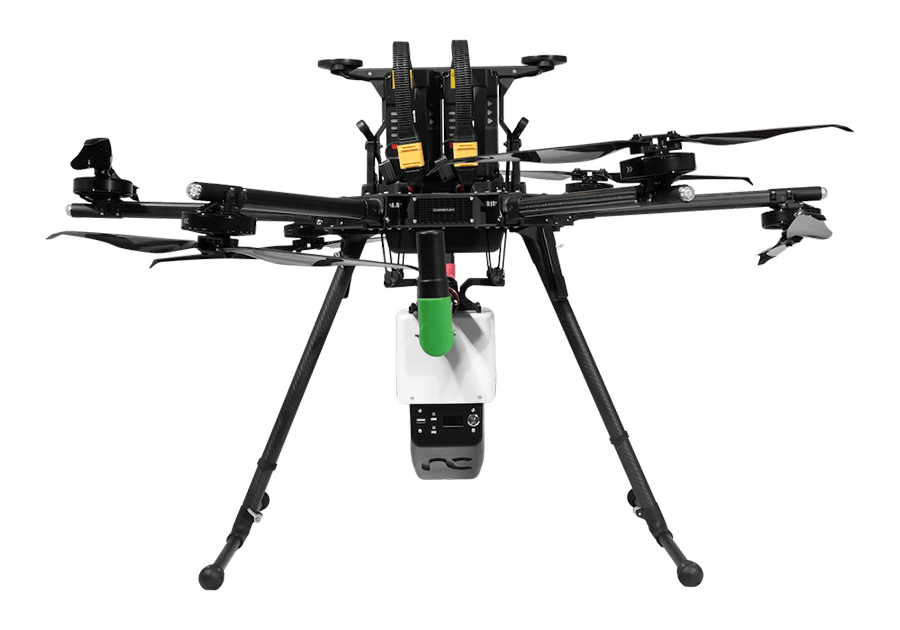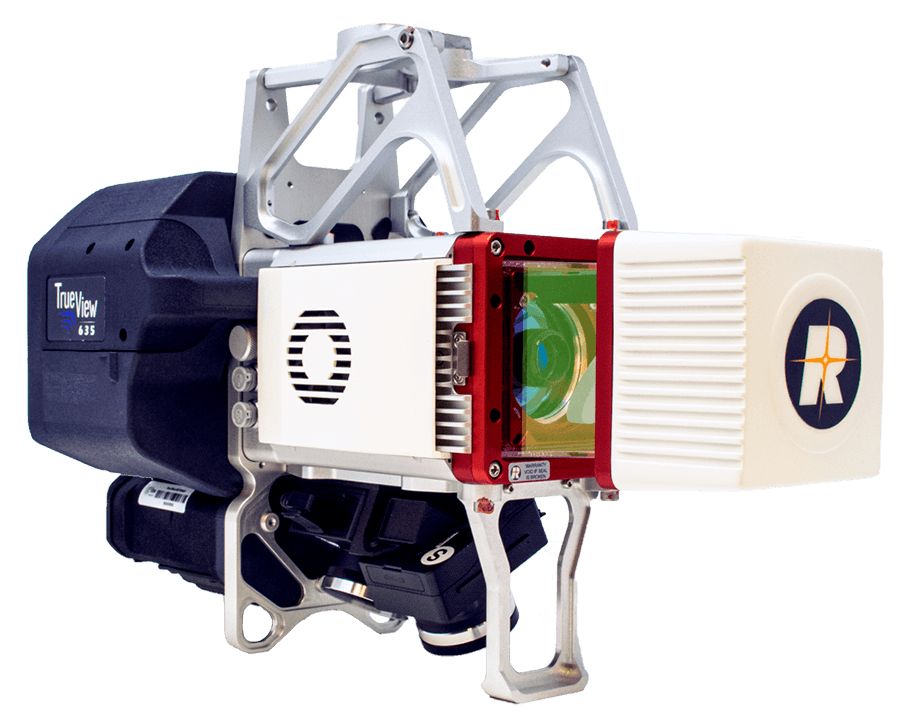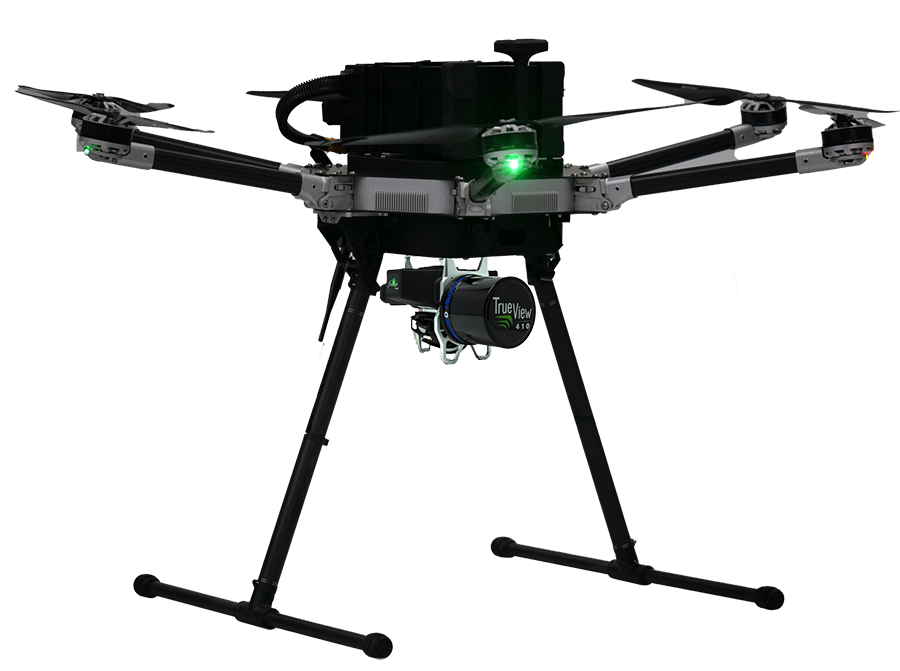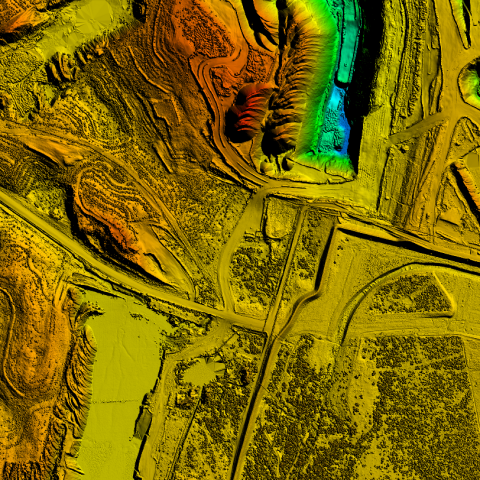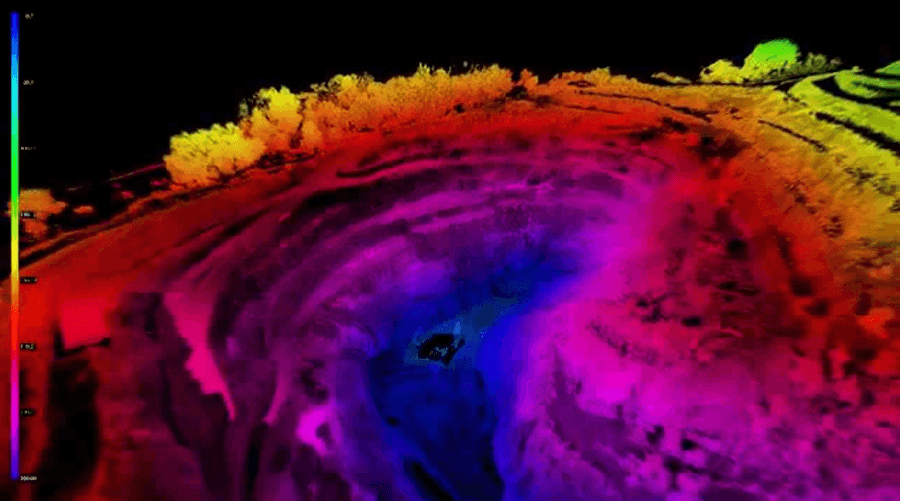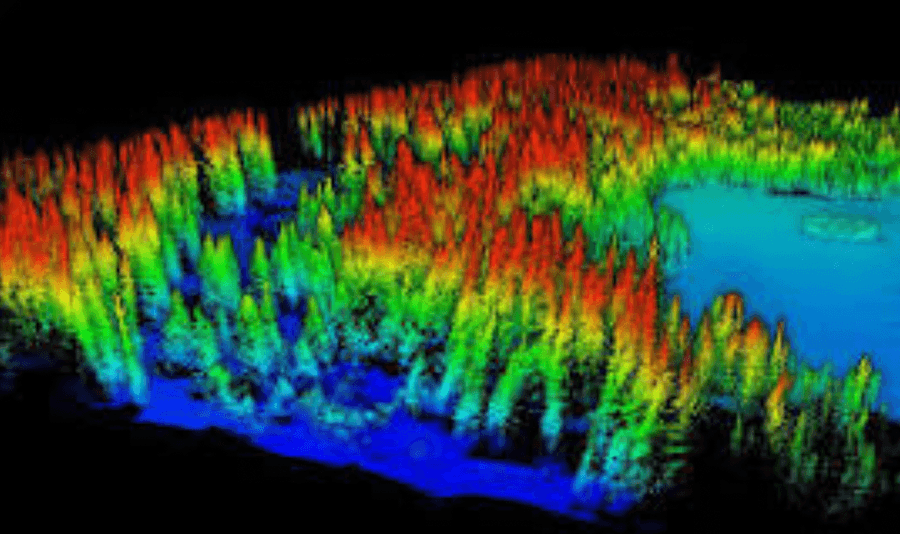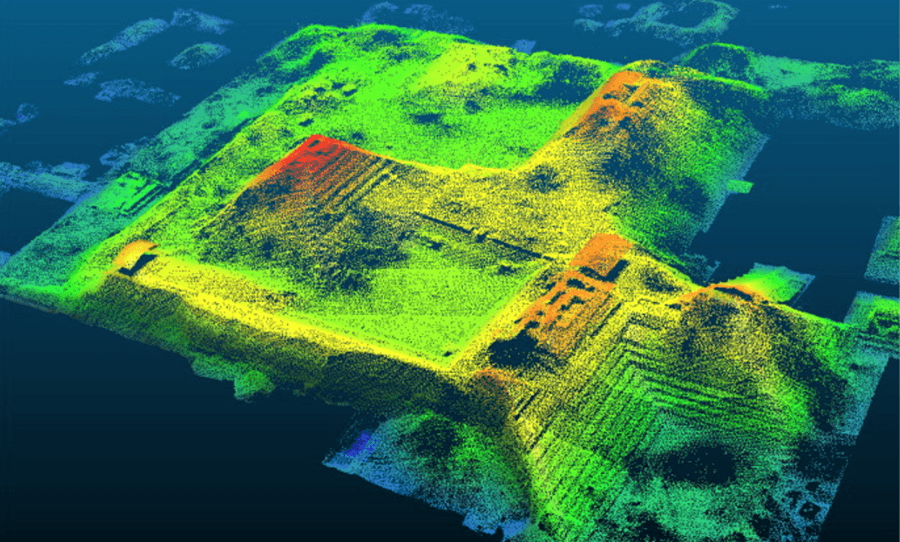
Wondering how Lidar Drones surveying works? Read our comprehensive article below to find out everything you need to know about Lidar Drone Surveying.
Table Of Contents
Lidar, an acronym for “light detection and ranging,” is a powerful technology that has revolutionized the world of surveying and 3D mapping.
Employing safe lasers to scan and create 3D maps of surveyed locations, Lidar offers unparalleled accuracy and detail.
Lidar sensors emit pulsed light waves that bounce off objects in the environment, and the time it takes for the waves to reach the objects is used to calculate the distances of the surfaces.
The precision of Lidar technology allows it to detect objects and create digital terrain models that surpass the capabilities of traditional surveying methods.
By capturing dense point clouds and measuring the reflection of laser pulses, Lidar sensors can generate highly detailed 3D models of surveyed areas, including topographical features, vegetation, and built structures.
Lidar’s light detection capabilities also enable it to operate in a variety of conditions, including low-light environments and challenging weather.
This adaptability makes Lidar a versatile solution for diverse surveying and mapping applications, such as forestry, agriculture, urban planning, and environmental monitoring.
Furthermore, the ability to collect data at high speeds and over large distances makes Lidar a valuable asset for industries that require rapid and accurate information.
This feature has driven significant advancements in autonomous vehicle technology, as Lidar sensors can detect obstacles and other road users in real-time, enabling safer navigation and decision-making.
How a lidar typically works is that it emits pulsed light waves into a surrounding area.
The wave bounces off of objects, and when it does so the device will calculate the distance of the surface based on the time it took for the wave to reach the object in that environment.
Below is shown the True View 600 3DIS a Lidar from GeoCue Group one of Inspired Flight’s Lidar Partners.
Questions? Need a product demo? Need additional information? Contact us and a member of our team will get back to you promptly.
A Lidar drone is a UAV (unmanned aerial vehicle) equipped with a Lidar payload.
This combination of drone and Lidar technology offers numerous advantages, such as the ability to quickly scan vast areas that would otherwise be inaccessible with expensive aerial equipment like helicopters.
Inspired Flight, a leading manufacturer of commercial drones, collaborates with renowned Lidar partners such as Lidar USA, Nextcore, Geocue Cube, Frontier Precision, and Aevex Aerospace to develop heavy-duty drones that are fully customizable to any payload, including Lidars.
In other words, a lidar drone is simply a drone that is used with a lidar payload. Lidar drones are super effective because you’re able to do widespread mapping across many acres in a very short period of time.
Drones give you full control over the Lidars movement and because of high-tech Lidars and the drone’s elevation you’re able to quickly scan vast areas that would otherwise not be accessible with expensive aerial equipment like a helicopter.
Generally, one manufacturer will make the drones while another will make the lidar sensors.
These different companies are able to each provide the best possible product because they are each specialized in those specific industries.
This lets you have an effective, accurate, and reliable lidar, along with a high-performance commercial drone built for heavy payloads, long flight times, and important missions.
Inspired Flight develops heavy-duty commercial drones that are fully customizable to any payload, including Lidars.
Some of our Lidar manufacturing partners include Lidar USA, Nextcore, Geocue Cube, Frontier PRecision and Aevex Aerospace – learn more about our Lidar partners here.
Below is shown the IF1200 by Inspired Flight equipped with a True View 515 3DIS, a Lidar from GeoCue Group one of Inspired Flight’s Lidar Partners.
Lidar drones not only provide the efficiency and flexibility needed for large-scale surveying projects but also enhance safety and reduce operational costs.
By utilizing UAVs for Lidar surveying, operators can minimize the risks associated with manned aerial surveys, such as potential accidents and the need for extensive training.
Additionally, drones can access hard-to-reach locations and navigate challenging terrain with ease, providing comprehensive and accurate data for informed decision-making.
Moreover, the integration of Lidar technology with advanced drone platforms enables the collection of high-resolution data, even in complex environments.
With the ability to adjust altitude and flight paths, Lidar drones can adapt to various surveying scenarios and deliver optimal results.
This level of customization allows for tailored solutions that meet the unique requirements of each project, further solidifying the value of Lidar drone surveying.
Photogrammetry and Lidar are similar but offer different benefits and drawbacks.
Photogrammetry provides a photo-like image showing clear details of the exact objects on the ground and their space, size, and color – but because photogrammetry uses photos and not lasers there is a drawback here because lasers can break through tiny spaces like between leaves and trees where some lasers will even hit the ground giving a lot more precise data on certain areas such as forests and areas of high vegetation.
Lidar also has an upper hand when it comes to processing time, full resolution photogrammetry processing can take several hours or even days depending on the size of the project.
Lidar on the other hand uses real-time kinematic positioning (RTK) during flight or post-processed kinematic position (PPK) after flight and these fully processed data sets can be ready in as little as under an hour.
In many cases, the choice between Lidar and photogrammetry depends on the specific needs of the project.
For instance, if the primary goal is to create visually appealing 3D models or maps, photogrammetry may be the better option due to its superior color and texture representation.
However, if the focus is on capturing accurate elevation data or surveying densely vegetated areas, Lidar is likely the more suitable choice due to its ability to penetrate vegetation and generate highly accurate point clouds.
Another consideration when choosing between Lidar and photogrammetry is the level of accuracy required for the project.
While both technologies can achieve high degrees of precision, Lidar generally provides superior absolute accuracy, making it ideal for projects that demand precise measurements and elevation data.
Furthermore, Lidar and photogrammetry can also be used together to leverage the strengths of both technologies.
By combining Lidar’s detailed elevation data with photogrammetry’s rich visual information, surveyors can create comprehensive 3D models and maps that provide valuable insights for various applications.
This integrated approach can optimize the data collection process and deliver enhanced results that cater to a wide range of project requirements.
Lidar applications are endless, common industries in which lidar surveying may be used include but are not limited to the following; civil engineering & surveying, infrastructure such as highways and road networks, and mines & quarries.
Usage of Lidar in Civil engineering is extensive. Aspects of civil engineering that require lidar are design, evaluation, and surveying.
Lidar can help make decisions on accurate design plans, help to find changes to previous data, and create detailed 3D landscapes for existing structures and vegetation.
Other benefits of surveying with done Lidar include speed, accuracy, and safety. These benefits are self-explanatory – with the efficiency, you get when using a lidar-equipped drone you’re able to cut down on the time it takes to survey massive areas of land, and in effect reduce the budget required as well.
Lidar provides an ultra-accurate representation of the environment because of the precision of lasers used in commercial lidar scanners.
UAVs make it much safer to run surveying missions that are unmanned and leave virtually no risk for human injury or death.
Lidar is also an extremely important technology for the infrastructure industry.
Lidar helps to cut down timelines and budgets for infrastructure planning, maintenance improvement, and development extensively.
When considering infrastructure you have to think about planning road projects, maintaining existing roads, improving existing roads, and developing new roads – within each of these steps of infrastructure Lidar can be used to safely and efficiently collect accurate data that helps to plan new projects, find damaged areas for very necessary repairs (that may be hard to spot with photogrammetry), and much more.
Lidar used in mines and quarries is a critical surveying tool. By nature, mines and quarries are very remote and access is limited making it very dangerous to access.
UAV Lidar offers a comprehensive surveying option that is many times more practical than traditional surveying.
Like other industries using UAV lidar technology improves safety, speed, and budget.
UAVs allow for quick access to hard-to-reach locations while maintaining safety for the operator.
Also, this makes it much faster to get the job done – quicker work means fewer resources, less man-hours, and fewer materials needed, this lowers necessary budgets to complete these projects.
UAV Lidar offers a comprehensive surveying solution that can quickly and safely access hard-to-reach locations, maintaining the safety of the operator and reducing the risk of accidents.
The increased speed at which UAV Lidar can survey these areas translates to fewer resources, reduced man-hours, and lower material costs, ultimately decreasing the budget needed to complete these projects.
By generating accurate and detailed 3D maps of mines and quarries, Lidar can help operators make more informed decisions regarding excavation, resource management, and site safety.
The high-resolution data provided by Lidar surveys enables the identification of potential hazards, such as unstable slopes and rockfalls, allowing for proactive mitigation measures and improved worker safety.
Lidar technology has become a cornerstone of modern surveying and mapping efforts.
As drone and Lidar capabilities continue to advance, industries worldwide will increasingly rely on these powerful tools for accurate, cost-effective, and efficient data collection and analysis.
Lidar drone surveying offers a glimpse into the future, where aerial Lidar data, Lidar point clouds, and digital terrain models will play an even more significant role in shaping our world.
Inspired Flight is at the forefront of this revolution, developing state-of-the-art drones and collaborating with top Lidar sensor manufacturers to provide the best possible solutions for commercial use.
Our commitment to innovation ensures that our customers have access to the most accurate information and powerful tools for their surveying and mapping needs.
The versatility of Lidar drones enables them to adapt to various surveying scenarios, including corridor mapping for linear infrastructure projects, such as:
-pipelines
-railways
-power lines.
These drones can capture high-accuracy data in sparse or dense vegetation, providing essential insights for planning and decision-making.
The raw data collected by Lidar drones can be transformed into actionable insights through post-processing software.
This software processes Lidar point clouds and aerial Lidar data to generate accurate digital terrain models, contour maps, and 3D point clouds.
The resulting visualizations can be analyzed to detect objects, measure distances, and determine the positions of objects in three dimensions.
Visual sensors, such as cameras and infrared sensors, can be used alongside Lidar technology to provide additional context and visual details.
When combined with Lidar point clouds, the data from visual sensors can create comprehensive and detailed 3D representations of surveyed areas, enhancing the accuracy and utility of the information gathered.
Integrating Lidar systems into drone platforms requires seamless coordination between drone manufacturers, Lidar sensor producers, and end-users.
Inspired Flight ensures this integration is smooth and efficient by collaborating closely with its Lidar partners, providing clients with customized solutions that fit their specific needs.
As the demand for accurate, efficient, and cost-effective surveying solutions continues to grow, Lidar drone technology will play an increasingly important role in a wide range of industries.
From civil engineering and infrastructure to mining and environmental monitoring, the applications of Lidar drones are vast and ever-expanding.
Inspired Flight is dedicated to staying at the cutting edge of drone and Lidar technology, developing innovative solutions that empower organizations and governments to make informed decisions and drive progress.
By harnessing the power of Lidar drone surveying, you can unlock new levels of accuracy, efficiency, and safety, propelling your projects into the future.
Questions? Need a product demo? Need additional information? Contact us and a member of our team will get back to you promptly.
